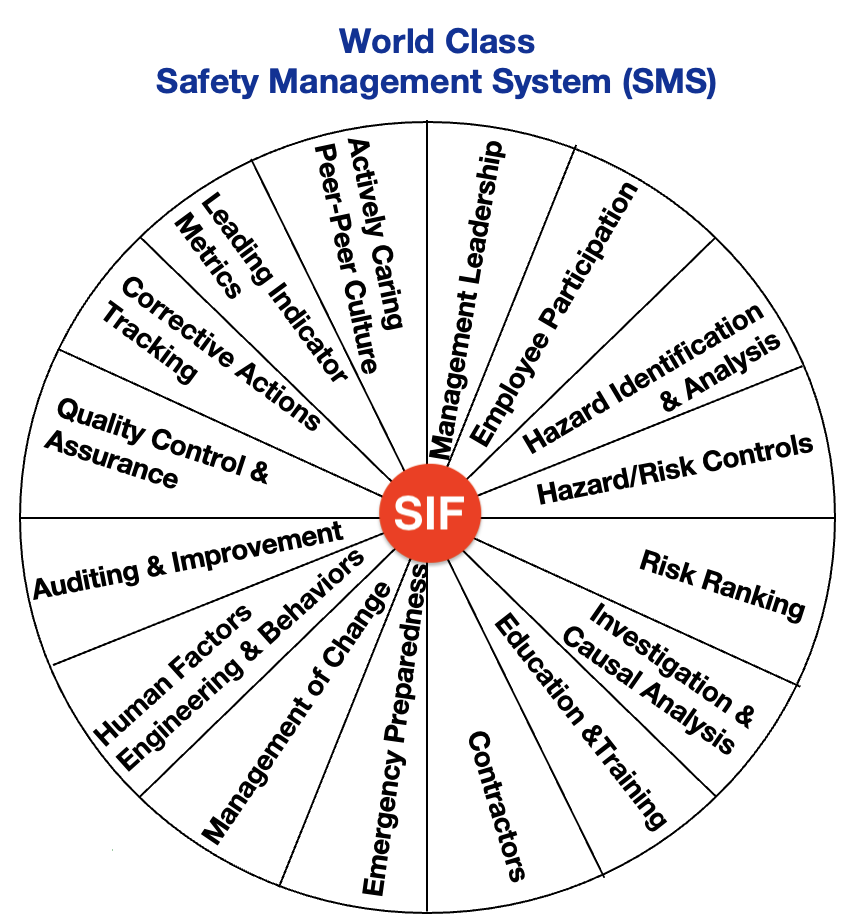 Lots of talk about SIF (Serious Injuries & Fatalities) these days. It even has a new acronym some of you may have seen being used… STKY (Stuff [or Sh_t] That Kills You). Leave it to the safety profession to package this risk management approach into a “program” that can be marketed and sold as another silver bullet to fix all of our struggles. Hence, SIF has many catchphrases that marketing folks have come up with – which is insulting to me, but it seems to have worked! You may notice that many of the BBS companies are now SIF experts as well – it’s called a business and it destroys credibility in safety efforts.
Lots of talk about SIF (Serious Injuries & Fatalities) these days. It even has a new acronym some of you may have seen being used… STKY (Stuff [or Sh_t] That Kills You). Leave it to the safety profession to package this risk management approach into a “program” that can be marketed and sold as another silver bullet to fix all of our struggles. Hence, SIF has many catchphrases that marketing folks have come up with – which is insulting to me, but it seems to have worked! You may notice that many of the BBS companies are now SIF experts as well – it’s called a business and it destroys credibility in safety efforts.
But this approach to managing CATASTROPHIC risks by use of a Safety Management System (a 14-element SMS) is NOTHING new to many of us. We call it “process safety” and it has been an OSHA standard since 1992.
In process safety, we are focused on CATASTROPHIC hazards and risks; unlike what a traditional OSH SMS is focused on (e.g. chasing recordable injuries). For example, when we do a Process Hazard(s) Analysis (PHA) in process safety we are analyzing events that could lead to catastrophic consequences (e.g. LOPC event impacting multiple personnel). In the traditional OSH SMS we use a Job Hazard Analysis (JHA) to identify hazards that lead to lesser consequences (e.g. cut finger, back injury, etc.). This is NOT intended to make light of these lesser injuries, just that this SIF approach requires a different set of tools AND a true understanding of RISKS (e.g. frequencies and severities).
If you have been following injury trends in the USA, you have probably noticed that we have reduced our lesser injuries over time; however, we still see the news accounts of these larger consequence events. Some will say, this is only a “social media” impact bringing these events to more people’s attention. That may be true, but data tells us that SIF events are NOT declining at the rate of the lesser events. So we can’t let off on what we are already doing to PREVENT all incidents – we just need to consider those events that may be MUCH LESS LIKELY to occur; but when they do occur, the consequences will be far MORE SEVERE.
Shown here is my SMS model that I provide to clients who are in high-risk industries, but are not required to comply with OSHAs/EPAs process safety standard(s). Notice that every element revolves around the SIF approach. SIF is NOT a “program”, it does not have a beginning and an ending, and it does not sit on a shelf in a binder; rather it is HOW WE MANAGE our RISKS.

